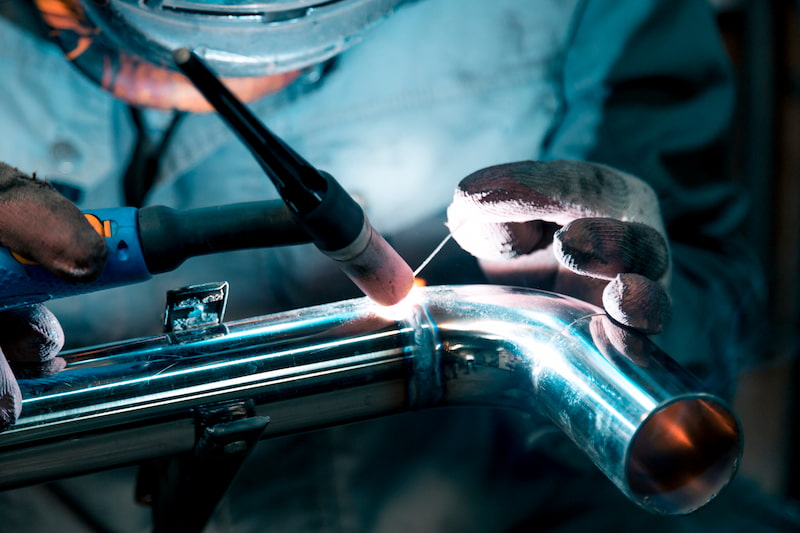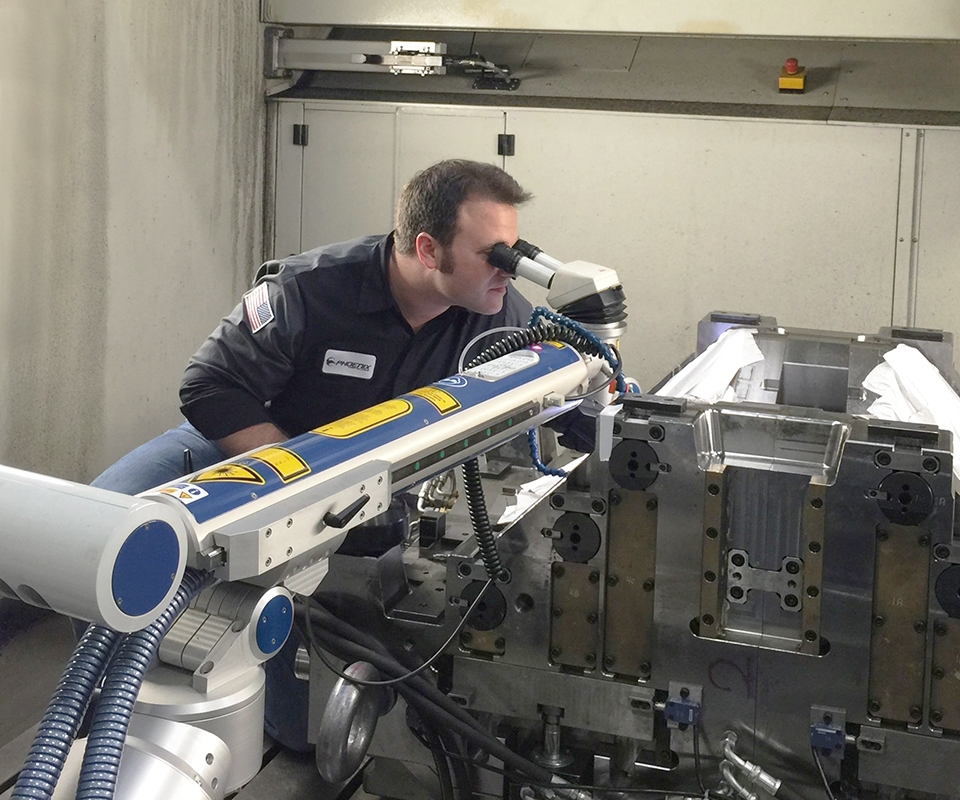Fast fixes to weld misalignment in Montana Mobile Welding and Repair Fabrication
Wiki Article
Common Welding Fixing Issues and How to Address Them Effectively
Welding repairs commonly come across a series of issues that can threaten the honesty of the end product. Typical problems include poor infiltration, porosity, and misalignment, to name a few. Each defect presents special challenges that call for particular strategies for resolution. Understanding these concerns is vital for welders aiming to boost their skills and end results. This discussion will explore these typical welding fixing issues and efficient approaches to resolve them.Inadequate Penetration
Poor penetration takes place when the weld steel falls short to completely fuse with the base material, causing weak joints and possible structural failings. This problem typically comes from inadequate warmth input, wrong electrode angle, or incorrect welding speed. Welders may experience insufficient penetration because of a mistake of the required specifications for a specific product thickness or type. Furthermore, contamination on the base material's surface area can prevent efficient bonding, worsening the trouble. To address insufficient penetration, welders must guarantee appropriate settings on their devices and preserve a tidy job surface. Normal assessment of welds is advised to recognize any type of deficiencies early, enabling for prompt adjustments and the avoidance of jeopardized structural integrity in bonded settings up.Porosity
Porosity is a typical flaw in welded joints that materializes as little gas bubbles caught within the weld metal. This defect can compromise the honesty of the weld, bring about minimized stamina and possible failing under stress and anxiety. Montana Mobile Welding and Repair Belgrade Welding. Porosity commonly emerges from contamination, moisture, or improper welding techniques, which allow gases to run away right into the liquified weld swimming pool. To resolve porosity, welders ought to assure correct surface area preparation, keep a tidy functioning environment, and utilize ideal welding specifications. Additionally, picking the best filler product and protecting gas can alleviate gas entrapment. Normal examination and screening of welds can aid recognize porosity early, assuring timely rehabilitative actions are taken, thereby maintaining the top quality and reliability of the welded frameworkMisalignment
Misalignment in welding can occur from different factors, consisting of improper configuration and thermal expansion. Recognizing the origin is essential for reliable resolution. Numerous improvement strategies are offered to realign elements and guarantee architectural integrity.Sources of Imbalance
Welding imbalance usually originates from a selection of underlying concerns that can jeopardize structural integrity. One primary cause is incorrect fit-up of parts prior to welding, which can cause voids and irregular surface areas. Variations in thermal development during the welding procedure can likewise cause distortion, particularly if the materials being joined have different coefficients of growth. Furthermore, insufficient securing and fixturing may fail to hold components safely in position, bring about movement during welding. Inadequately conserved devices, including welding devices and devices, may present inconsistencies in the weld bead, additional adding to imbalance. Operator error, stemming from insufficient training or experience, can additionally play a considerable duty in producing misaligned welds.
Improvement Techniques Available
Addressing imbalance successfully requires a combination of rehabilitative techniques customized to the certain issues available. One usual approach is making use of fixtures or jigs to hold components in the correct placement throughout welding, making certain regular placement. In addition, preheating the materials can help reduce distortion and boost fit-up. For considerable imbalance, mechanical realignment methods, such as making use of hydraulic jacks or clamps, can be employed to remedy the setting prior to welding. Post-weld warmth treatment may likewise be necessary to soothe anxieties created by imbalance. Cautious evaluation and change throughout the configuration stage can protect against imbalance issues from ending up being significant issues, advertising a smoother welding procedure and improving general architectural stability.Distortion
Distortion is an usual challenge in welding that can develop from numerous factors, consisting of unequal cooling and heating. Understanding the root causes of distortion is necessary for carrying out reliable avoidance techniques. Addressing this concern not only enhances architectural honesty but also enhances the total high quality of the weld.Reasons of Distortion
When subjected to the intense warm of welding, materials typically go through adjustments that can cause distortion. This sensation largely develops from thermal growth and contraction throughout the welding procedure. As the weld area warms up, the product broadens; upon air conditioning, it gets, which can produce interior tensions. Furthermore, unequal home heating across a work surface can worsen these stress and anxieties, causing warping or bending. The sort of material likewise plays a considerable function; metals with differing thermal conductivity and coefficients of growth may respond in different ways, causing uncertain distortions. Furthermore, bad joint design and poor fixturing can add to misalignment during welding, raising the likelihood of distortion. Comprehending these causes is essential for effective welding fixing and avoidance methods.Avoidance Techniques
Efficient avoidance techniques for distortion throughout welding focus on managing warm input and making sure proper joint design. Keeping a consistent warmth input helps to decrease thermal development and tightening, which can lead to distortion. Making use of techniques such as preheating the work surface can likewise decrease the temperature level gradient, promoting consistent heating. In addition, picking appropriate joint designs, such as T-joints or lap joints, can boost stability and reduce stress and anxiety focus. Applying proper fixturing to safeguard the work surfaces in position even more help in keeping alignment throughout the welding procedure. Lastly, staggered welding sequences can distribute heat a lot more uniformly, preventing localized distortion. By using these techniques, welders can greatly decrease the chance of distortion and improve the overall top quality of their welds.Splitting
Splitting is a common problem run into in welding repair services, often resulting from different aspects such as inappropriate air conditioning prices, material selection, or inadequate joint preparation. The incident of fractures can greatly jeopardize the integrity of the weld, resulting in potential failures during procedure. To resolve this problem, welders have to initially assess the origin causes, making certain that products work and appropriately chosen for the specific application. Additionally, regulating the cooling rate throughout the welding procedure is crucial; quick air conditioning can cause stress and bring about cracking. Correct joint style and preparation additionally add to decreasing the danger. Applying these strategies can enhance weld quality and toughness, eventually reducing the chance of splitting in finished weldments.
Insufficient Combination
A significant issue in welding repair work is insufficient blend, which takes place when the weld metal does not appropriately bond with the base material or previous weld passes - Montana Mobile Welding and Repair Belgrade Welding. This flaw can lead to weak points in the joint, possibly jeopardizing the honesty of the bonded framework. Variables adding to incomplete combination consist of inadequate warm input, incorrect welding strategy, and contamination of the surfaces being joined. To address this concern properly, welders must assure correct pre-weld cleansing and surface area preparation, in addition to change their welding parameters to achieve adequate penetration and fusion. Regular inspection throughout the welding process can additionally aid determine insufficient blend early, enabling timely restorative steps to improve the general high quality of the weldOverheating
While welding repair work can boost structural integrity, overheating offers a substantial obstacle that can cause material destruction. Extreme warm during welding can alter the mechanical properties of steels, leading to decreased strength, increased brittleness, and warping. This phenomenon is particularly important in high-stress applications where structural reliability is extremely important. Identifying overheating can include visual examinations for staining or distortion, in addition to monitoring temperature level during the welding process. To mitigate the risks connected with getting too hot, welders must employ appropriate strategies, such as controlling warm input, adjusting traveling speed, and using appropriate filler materials. Furthermore, carrying out pre- and post-weld warm treatments can help restore product homes and boost the total top quality of the fixing, ensuring long-term efficiency and security.Often Asked Concerns
What Are the Typical Signs of a Welding Defect?

How Can I Check My Welds for High quality?
To test welds for top quality, one can utilize visual examinations, ultrasonic testing, and radiographic methods. Each strategy assures architectural integrity, identifies issues, and validates adherence to defined requirements, eventually improving the reliability of the bonded joints.What Security Precautions Should I Take While Welding?
When welding, one ought to focus on safety and security by wearing proper personal safety equipment, ensuring correct air flow, securing combustible materials away, preserving a clean office, and knowing environments to stop mishaps and injuries.Can I Repair a Weld Without Remodeling the Entire Joint?
Fixing a weld without redoing the entire joint is feasible, depending upon the damage (Belgrade Welding). Techniques such as grinding, adding filler product, or making use of a welding process can successfully resolve certain flaws while preserving the surrounding frameworkWhat Equipment Are Important for Efficient Welding Services?
Vital tools for effective welding fixings include a welding equipment, cable brush, grinder, safety equipment, clamps, and filler products. Each device plays a vital function in making certain quality and safety and security during the repair service procedure. Porosity generally occurs from contamination, moisture, or inappropriate welding methods, which enable gases to get away into the liquified weld swimming pool. Poorly conserved equipment, consisting of welding makers and devices, might present disparities in the weld grain, additional adding to misalignment. When subjected to the intense warmth of welding, products usually undergo changes that can lead to distortion. Splitting Belgrade is a typical concern come across in welding repair services, commonly resulting from different aspects such as improper cooling rates, material option, or insufficient joint prep work. A considerable issue in welding fixings is insufficient combination, which takes place when the weld steel does not appropriately bond with the base material or previous weld passes.Report this wiki page